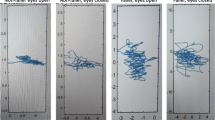Abstract
Subjects in low socio-economic strata in underdeveloped countries are subjected to considerable adverse influences which may enhance age-related changes in the nervous system. We therefore assessed the presence of ankle jerks and the degree of postural hypotension in two groups, one from the upper socio-economic level (58 subjects) and the other from the lower socio-economic level (56 subjects). All subjects were over 65 years of age. Only 6% had bilateral loss of ankle jerks, with no difference between the groups. Postural hypotension of 30 mmHg or greater was more frequent in the upper socio-economic group, nine out of 58 versus two out of 56 in the lower group. We conclude that there is no relationship in the elderly between social deprivation and certain markers of neurological dysfunction, such as the absence of ankle jerks and postural hypotension. The reasons for a greater frequency of postural hypotension in the higher socioeconomic group are unclear.
Similar content being viewed by others
References
Critchley M. The neurology of old age.Lancet 1931;i: 1119.
Prakash C, Stern G. Neurological signs in the elderly.Age and Ageing 1973;2: 24–27.
Smith SA, Fassler JJ. Age-related changes in autonomic function: relationship wtih postural hypotension.Age and Ageing 1983;12: 206–210.
Alvarez G. Effects of material deprivation on neurological functioning.Soc Sci Med 1983;17: 1097–1105.
World Development Report 1987. The World Bank. Oxford: Oxford University Press.
Alvarez M, Muzzo S, Ivanovic D. Escala para medición del nivel socio-economico en el area de la salud.Rev Med Chile 1985;113: 243–252.
Graffard M. Une methode de classification sociale d'echantillons de population.Courrier 1956;6: 445.
Ewing D, Clarke B. Diagnosis and management of diabetic autonomic neuropathy.Br Med J 1982;285: 916–918.
Robinson BJ, Johnson RH, Lambie DJ, Palmer KT. Do elderly patients with an excessive fall in blood pressure on standing have evidence of autonomic failure?Clin Science 1983;64: 587–591.
Clark AN. Postural hypotension in the elderly.Br Med J 1987;295: 683–684.
Lipsitz LA. Orthostatic hypotension in the elderly.New Engl J Med 1989;321: 952–956.
Impallomeini M, Flynn M, Kenny R, Kraenalin M, Pallis C. The elderly and their ankle jerks.Lancet 1984;i: 670–672.
Caird F, Andrews GR, Kennedy R. Effects of posture on blood pressure in the elderly.Br Heart J 1973;35: 527–530.
Author information
Authors and Affiliations
Rights and permissions
About this article
Cite this article
Alvarez, G., Idiaquez, J. Differences in postural hypotension and ankle jerks in the elderly from two contrasting socio-economic levels. Clinical Autonomic Research 1, 243–244 (1991). https://doi.org/10.1007/BF01824994
Received:
Accepted:
Issue Date:
DOI: https://doi.org/10.1007/BF01824994




